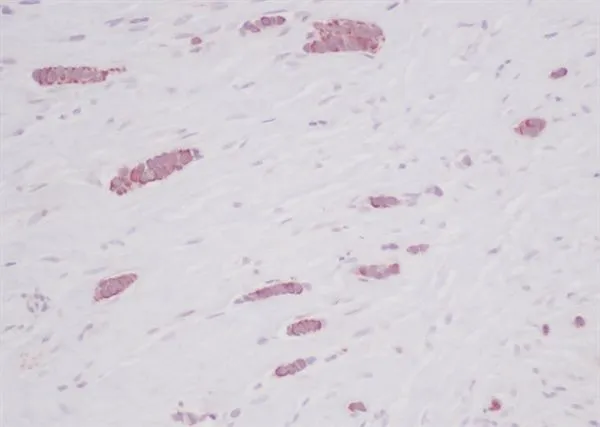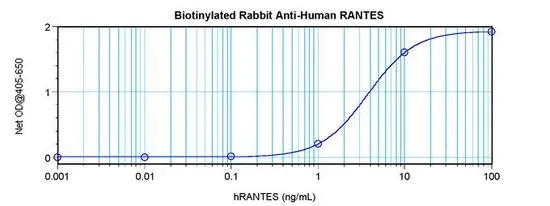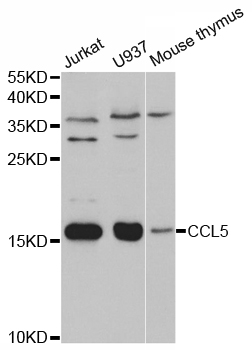RANTES antibody [12K10]
GTX52607
ApplicationsWestern Blot, Neutralisation/Blocking
Product group Antibodies
TargetCCL5
Overview
- SupplierGeneTex
- Product NameRANTES antibody [12K10]
- Delivery Days Customer9
- Application Supplier NoteWB: 1:500 - 1:1000. *Optimal dilutions/concentrations should be determined by the researcher.Not tested in other applications.
- ApplicationsWestern Blot, Neutralisation/Blocking
- CertificationResearch Use Only
- ClonalityMonoclonal
- Clone ID12K10
- Concentration500 ug/ml
- ConjugateUnconjugated
- Gene ID6352
- Target nameCCL5
- Target descriptionC-C motif chemokine ligand 5
- Target synonymsD17S136E, RANTES, SCYA5, SIS-delta, SISd, TCP228, eoCP, C-C motif chemokine 5, T-cell specific protein p288, beta-chemokine RANTES, chemokine (C-C motif) ligand 5, eosinophil chemotactic cytokine, regulated upon activation, normally T-expressed, and presumably secreted, small inducible cytokine subfamily A (Cys-Cys), member 5
- HostMouse
- IsotypeIgG1
- Protein IDP13501
- Protein NameC-C motif chemokine 5
- Scientific DescriptionThis gene is one of several chemokine genes clustered on the q-arm of chromosome 17. Chemokines form a superfamily of secreted proteins involved in immunoregulatory and inflammatory processes. The superfamily is divided into four subfamilies based on the arrangement of the N-terminal cysteine residues of the mature peptide. This chemokine, a member of the CC subfamily, functions as a chemoattractant for blood monocytes, memory T helper cells and eosinophils. It causes the release of histamine from basophils and activates eosinophils. This cytokine is one of the major HIV-suppressive factors produced by CD8+ cells. It functions as one of the natural ligands for the chemokine receptor chemokine (C-C motif) receptor 5 (CCR5), and it suppresses in vitro replication of the R5 strains of HIV-1, which use CCR5 as a coreceptor. Alternative splicing results in multiple transcript variants that encode different isoforms. [provided by RefSeq, Jul 2013]
- Storage Instruction-20°C or -80°C,2°C to 8°C
- UNSPSC12352203



